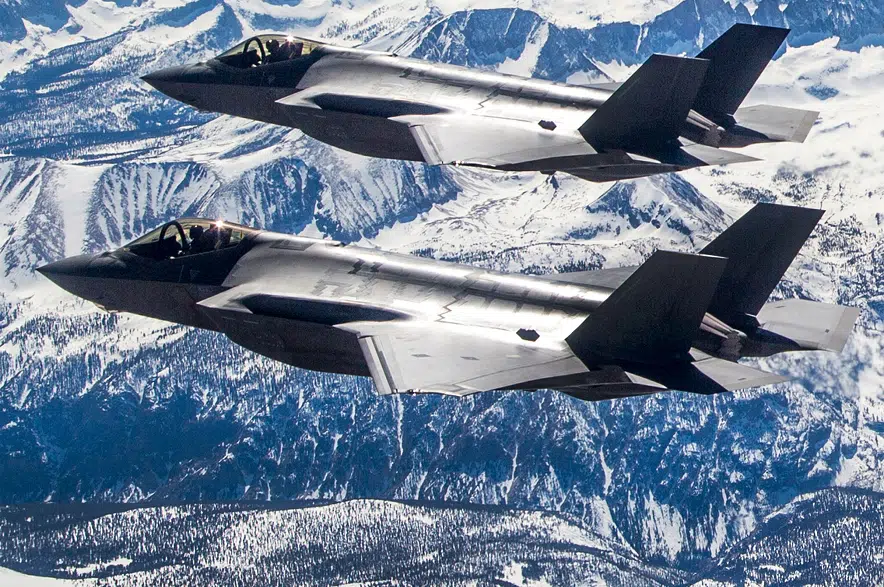By Derek Craddock
After years of debating and consulting and changing minds, Canada is purchasing F-35 fighter jets for the Canadian Forces.
While the government is celebrating the long-awaited announcement, there are still many questions about the fighter jets, the costs, and what they could mean for Saskatchewan.
On Monday morning, Defence Minister Anita Anand officially confirmed the planned purchase of a fleet of F-35s to replace the Royal Canadian Air Force’s aging CF-18s.
The cost of the endeavour grew from an earlier estimate of about $7 billion to $19 billion.
The initial order will be for 16 F-35s, the first of which will be delivered to the Canadian military in 2026. Another 72 will be ordered in subsequent years, bringing the total size of the fighter fleet to 88 aircraft.
For Canada, this appears to be the end of a long journey in securing these aircraft, a journey that dates back to the first conversations and reports in 1997.
“I think it’s the only deal the Government of Canada could have come to,” said Russell Isinger with the department of political studies at the University of Saskatchewan.
“We’ve been talking about this for almost 25 years.”
While saying this was the only decision for Canada, Isinger acknowledged that the road ahead will not be an easy one, noting that military procurement in Canada is controversial, political, and based on economics.
“It has just been, in tried-and-true Canadian fashion, a somewhat tricky path to get here,” he said.
Part of that tricky path is the cost, which now stands at $19 billion, a price tag that has groups like the Canadian Taxpayers Federation (CTF) worried.
“The government needs to stop going way over budget with its military procurement,” the CTF said in a statement emailed to paNOW.
“Nineteen billion dollars is double the original price tag of replacing the CF-18s. The government needs to make sure these costs don’t balloon further. With the massive price tag, any more cost overruns will put a huge hole in taxpayers’ wallets.
“In the highly competitive field of government waste, military procurement stands head and shoulders above all others.”
According to Isinger, the estimate the government announced Monday is likely a low one.
“There’s no such thing as a military project that doesn’t cost more than people think at the time the contract (is) signed, so I assume the greatest negative from the Canadian public’s view is the cost,” he said.
Officials said the full cost of purchasing and operating the aircraft over a span of 40 years, as well as building new hangars and other facilities for the planes, would reach about $70 billion.
Asked about the actual cost per plane, officials said Canada will end up paying the same as the United States — about $85 million USD per plane — because it is one of eight partner countries that have been paying for the F-35’s development costs since 1997.
Officials did not specifically address the $7 billion set aside for the first tranche of aircraft, but did note that Ottawa will be on the hook for a number of start-up costs such as storage and maintenance facilities, as well as spare parts and weapons.
So what, if anything, does this purchase mean for Saskatchewan? Isinger said there may not be a direct impact now, but the future is open.
“Canadian industry, as they have been, will be able to participate in the manufacturing process for these,” Isinger said.
“Having a fighter arm, and a modern one, requires pilots. There will continue to be training done, likely into the future at Moose Jaw. They will continue to funnel pilots into the air force to man these aircraft.”
Another concern Isinger has is whether all 88 aircraft will eventually join the RCAF. He said that depends on inflation and whether Canada is involved in any major conflicts in the world, but he wouldn’t be surprised to see to order cut to around 60 planes.
In the meantime, the government has been forced to spend more than a billion additional dollars on the CF-18 fleet to keep it flying until the F-35s have been delivered. By 2032, the CF-18s will have been around for 50 years.
-With files from The Canadian Press.







